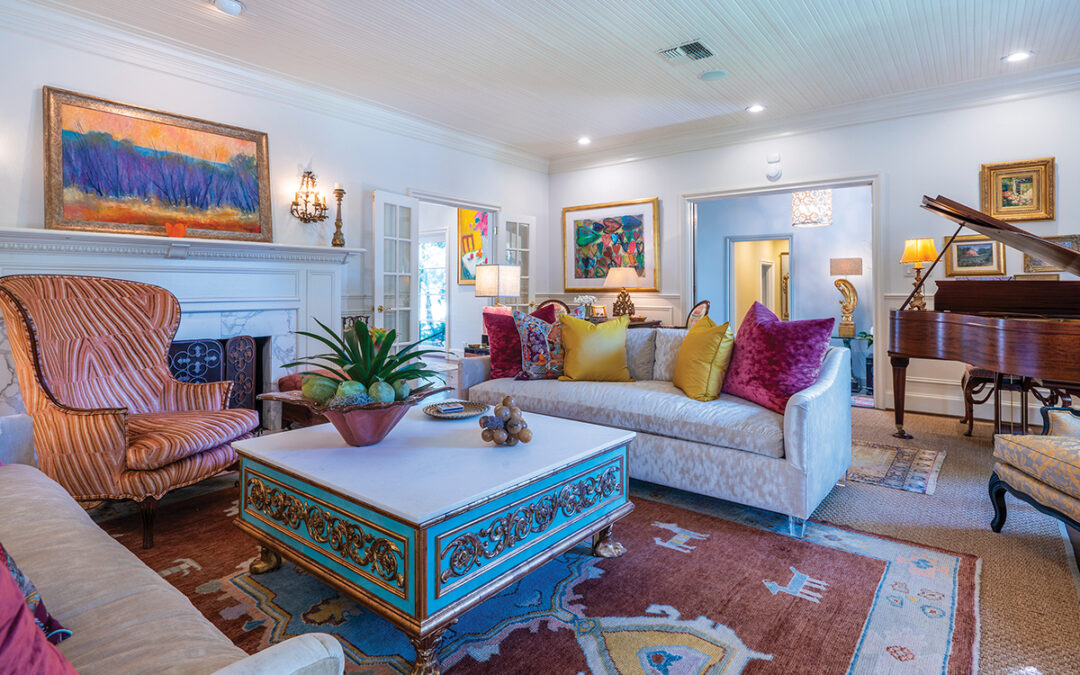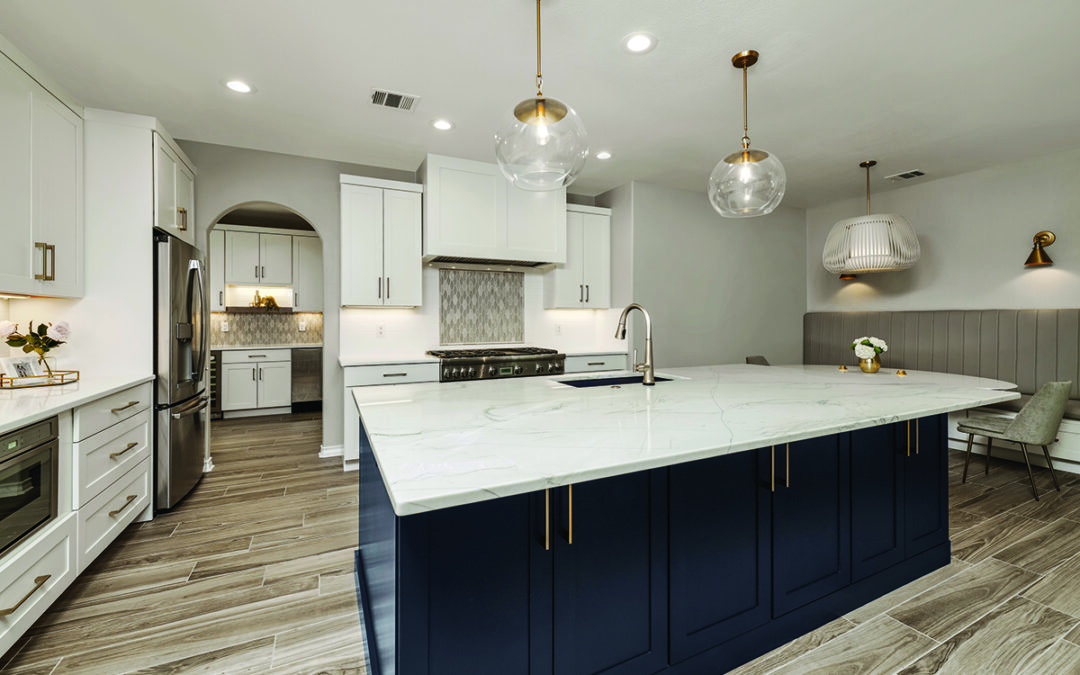With the decline in the economy, some people are opting to remodel their current dwelling rather than move to a bigger or better residence. Not only does remodeling allow homeowners to customize changes to suit lifestyles, personal tastes or current trends, remodeling can also be extremely cost-effective in the long term. Remodeled bathrooms almost always pay for themselves when it comes time to sell a home, but the biggest payoff is usually the updated kitchen.
Today’s kitchen is more than just a place to prepare a meal. It is a gathering area, a place to do homework or catch up on the day’s events. It is the hub of the home. Gone are the days of separate kitchens and eating areas. The modern kitchen is filled with open spaces, top-of-the-line appliances and cabinetry, flooring and countertops that are more than just aesthetically pleasing — they are highly functional.
Learn from experience
Having recently remodeled a galley-style kitchen in my circa 1960s home, I learned firsthand the difference that even a small face-lift can make to an older house. I also learned several tricks such as where to skimp and where to splurge, how to create the illusion of space, how to actually get more space and how important it is to measure more than once. Admittedly I am no expert, but I do have far more experience in the kitchen-remodeling arena than I did three months ago. To that end, I offer the following advice.
Advice
First, and most importantly, find a good contractor. How do you do that? Ask around. You want someone who not only has plenty of experience, but plenty of experience with your style of home. Why does that matter? Because many homes in certain neighborhoods have similar attributes, particularly if they were built in the same era, and familiarity with those and the problems that they may impose can often help contractors avoid little surprises that can cause the project to exceed the budget.
This brings us to another high priority: the budget. Contractors will tell you they have yet to see a project that didn’t go over budget, whether by $100 or $100,000. One way to prevent that from happening is to know what you can comfortably afford to spend and then decide what the estimated cost of the project will be. At that point you can decide on areas where you might want to splurge and where you don’t mind cutting back. A family that doesn’t spend much time eating home-cooked meals, for example, probably doesn’t need to spend extra for a Viking stove. A family with small children may want to invest in a porcelain tile floor as it is extremely durable and doesn’t absorb spills and stains. And there are shortcuts. The family that likes the look of a granite countertop but can’t pay its high price tag might consider one of the many other more affordable options, such as Shirestone, tile or even treated concrete. Shirestone countertops use a substance that is poured on site in your kitchen to fit the walls and cabinets without seams. Sinks can be under-mounted, dropped in or flush-mounted, then the installer will color and texture the countertops there in your kitchen and even add unique touches, like medallion tiles or even your kids’ handprints.
One area where you might not want to cut corners is in the quality of the cabinetry you choose for your new kitchen. Visit showrooms all over town, and be sure to see everything, from the quality high-end Wood-Mode custom cabinetry at Cabinetry Designs and the beautiful custom cabinetry available through Palmer Todd, to the basics available at Home Depot and Lowe’s. You’ll want to see all the available wood finishes, colors and styles. These places can handle all your kitchen remodeling needs, and many are pleased to provide free consultations and estimates, so it doesn’t hurt to look and talk to them all.
Create some space
The most common complaint regarding older homes is that there simply isn’t enough storage. Look around your kitchen and assess whether or not there is any space that could be converted. Consider tearing out fur downs (which can look dated) and adding additional cabinets in their place. By employing this method, we were able to add six small cabinets, perfect for those items we don’t frequently use, above our existing cabinets.
Another complaint is that there isn’t enough space — period. Create the illusion of space by keeping a neutral color scheme that flows from the walls to the floors and countertops. Neutral doesn’t mean monochromatic. You can mix various hues in the same family, playing with tone and depth to create interest. Coming up with new ideas can also be helpful. We lowered a bar that separated the kitchen from the dining area, and the result was a room that flowed gracefully from one area to the next. Such a small change had a big impact on the look of both rooms.
Clutter is a no-no when it comes to your kitchen, so if your countertops have become a catchall for keys, cell phones, bills and other discarded items, think about designing a desk area. Kitchen desks are very popular for the functionality they add to what is often the busiest room of the house. They can serve as a central computer location, a place to write grocery lists, peruse cookbooks and more. Fortunately, we had one unused wall that lent itself to a kitchen desk. We used the same marble there as we had in the countertops so that the desk appears to be an extension of the counter itself. We also added drawers down each side and cabinets in the middle, for even more of that coveted storage space.
Measure accurately
“Measure twice; cut once,” is a common adage in the home building industry, but where remodeling is concerned, measure twice, and then measure again and again and again. Many of today’s new appliances are oversized or require different installation than the older appliances you are replacing. There is nothing worse than installing beautiful marble countertops and then realizing that your fabulous new slide-in oven doesn’t fit — trust me, I know!
Finally, understand what you are getting into with this project. Remodeling is messy, and chances are you will not be eating at home for a few weeks. Expect that life will be upside down for a while and that there will be dust and noise — lots of noise! Know that there will be hiccups along the way, and be flexible. Stay focused on the big picture and, when you sit down for your first meal in your beautiful new kitchen, you will realize that all the inconveniences were worth it.









0 Comments